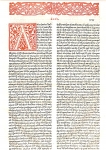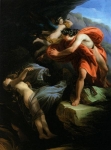We are pleased to announce that Freya Channing has joined our Department as the Rare Books Copy Cataloger! Please join us in welcoming her to the fold. She will begin her new position on May 1.
Freya is already familiar to many of us as she has been working in Special Collections as the Processing Assistant on the Helen & Newton Harrison Papers for the past year and a half. Prior to that her work experience has included other archival processing projects, processing and describing printed ephemera, cataloging art books, and a wide variety of digital projects including metadata creation and cleanup. Freya has a B.A. from Mills College and an MLIS from the University of Pittsburgh.







 Stanford University Home
Stanford University Home